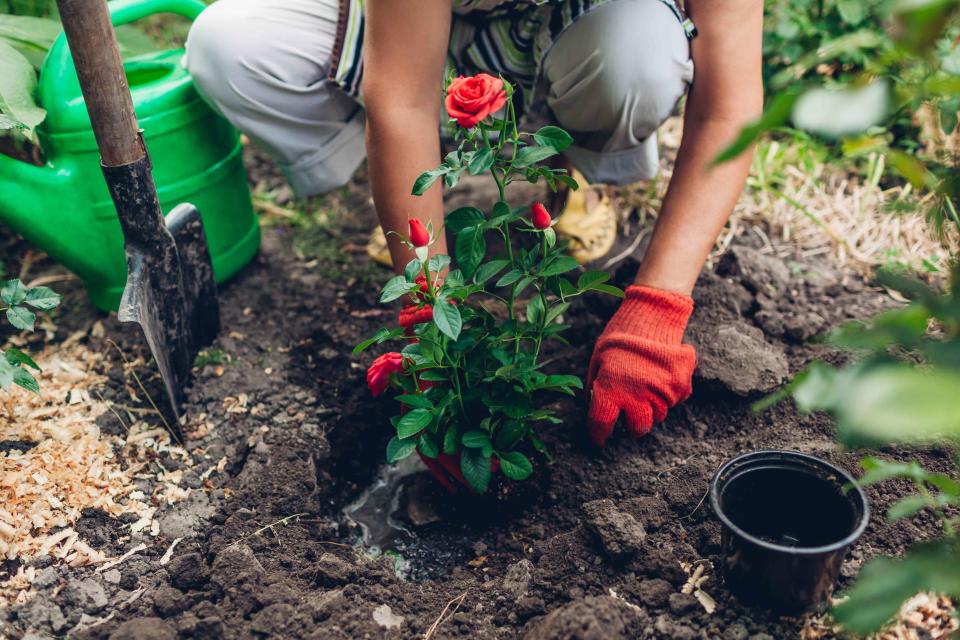Plant Hardiness Maps Have Changed: Here's What You Need to Know
You may want to strategize your garden a little differently next year.

Maryviolet/Getty Images
Any gardener worth their salt knows their growing zone—it's a shorthand way for them to figure out which plants will thrive in their garden, and which plants will likely flop. But you may need to make some changes. The USDA recently updated their plant hardiness maps, due to the warming temperatures in both summer and winter. And those changes could impact what thrives in your garden.
"Planting has been impacted at both ends of the temperature spectrum," says Yardzen design director Kevin Lenhart. "Average winter temperatures are up, and this is allowing some species to thrive, or at least survive, in areas that were previously too cold for them. But rising summer temperatures are having the opposite effect, killing off some species that previously could tolerate certain regional climates."
Related: How to Make Your Home Climate-Safe
Here's what you need to consider as you look at the new hardiness zone maps—and start planning your garden for next year.
Many hardiness zones have shifted
Hardiness zones in many part of the U.S. have shifted a half-zone or full zone up. That doesn't necessarily mean a huge change—you still aren't going to be able to plant an orange tree in Maine (at least not yet!). But you'll definitely want to check out any new plants you're considering to see if they're still in your hardiness map zone. "It’s helpful to look at any environmental change as an opportunity to be supportive of the local ecosystem, while also practicing resilience both with our landscape and our outlook," says Bethany Lakatos, plant expert at Fast Growing Trees.
You don't need to rip out plants that aren't for your "zone"
As long as the plants are still thriving in your garden, let them be. Even with the finely detailed new maps, you may have a different microclimate on your own property that allows those plants to thrive.
But you'll want to watch for signs that your current plants aren't doing well—like if they need significant irrigation, are constantly beset with pests and disease, or require a lot of drastic measures to stay healthy.
Start small when experimenting with something new
You don't want to go overboard with new plants until you know that they can thrive where you live. So plant a small plot with a few plants, then add more the following season if they seem to weather this year.
For the best chance of success, research the plants extensively before you try. "Take extra care to ensure those borderline species’ soil, light, and moisture needs are met as perfectly as possible, so they’ll be best prepared to handle any stresses the climate may throw at them," Lenhart says. You don't want a full-sun plant trying to weather your local climate and a shady spot, for instance.
Related: 15 Impossible-to-Kill Outdoor Plants
Watch out for temperature and weather extremes
While the overall warming pattern has impacted what can thrive in your garden, extreme heat, drought, and cold can also damage or kill plants that would otherwise thrive. "In some areas of the country, rising temperatures may correlate with extended periods of drought, worsening weather conditions like flooding and hurricanes, and increased forest fires," Lakatos says. "In hot, dry climates, some trees which were manageable with extra care are now overly heat-taxed and require an impractical amount of supplemental irrigation. Drought stress can leave plants at a loss for resources, making them more likely to incur damages from disease and pests."
Related: 34 Drought-Tolerant Plants That Will Improve Your Home's Curb Appeal
Put more effort into protecting your plants
Lakatos recommends mulching to insulate plant roots from intense heat or marginal cold, slow and deep watering to create a robust root system that can stand up to extreme weather, and making sure to site plants in the right spot, which turns good care into a happy, thriving, well established plant.
If you're planting a perennial that's new to your zone, make sure to protect them over the winter to increase the chances that they come back the following year by covering them, mulching them, or moving them indoors if they're in containers once the season is over.
Understand the challenges on your own property
If your property has areas where water tends to sit, or is overly shady, that's going to impact what plants will do well in your gardens, regardless of which plant hardiness zone you live in. Lakatos recommends making lists of those challenges—and a wish list of things you'd like to have in your garden—and looking for ways you can overcome the challenges to get the garden of your dreams. "By writing down what’s important for your garden, you can find plants for your zone shift that marry practical solutions and aesthetics," Lakatos says.
Focus on native plants
Using native plants not only reduces your plant care to-do list, but it provides benefits far beyond a pretty landscape. "Using native plants contributes to overall ecosystem support by giving wildlife and beneficial insects shelter, a safe place to mate and have their young, and a food source," Lakatos says. "Native plants are better adapted to the local climate, though they should still be sited in optimal locations which fulfill the sun, water, and soil requirements."
For more Real Simple news, make sure to sign up for our newsletter!
Read the original article on Real Simple.


